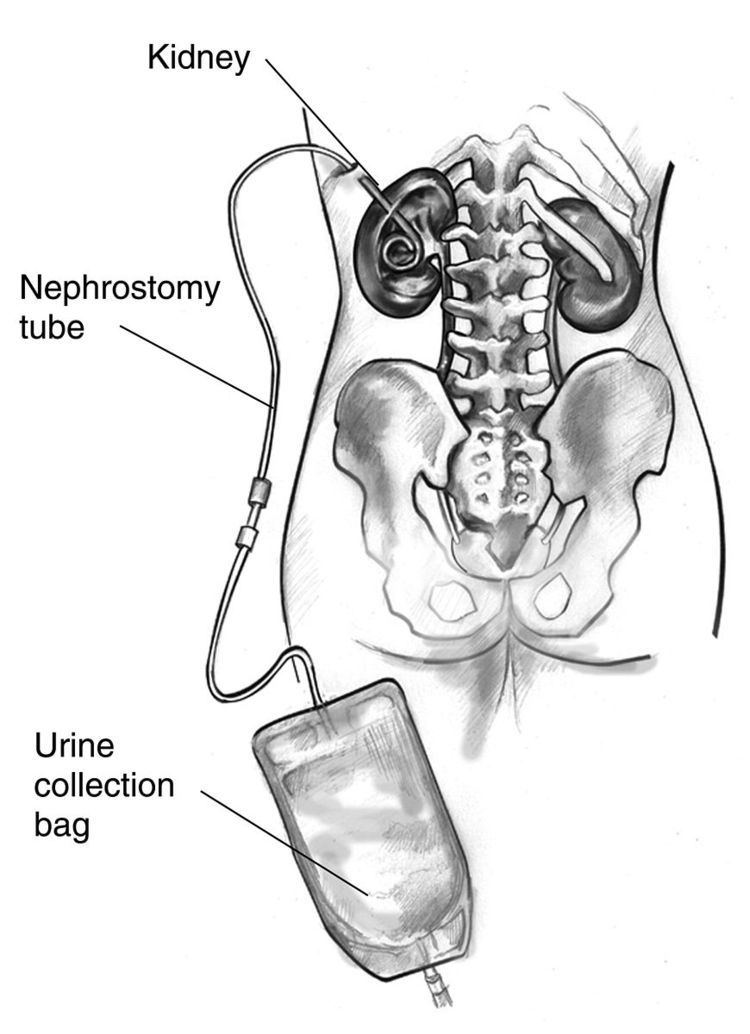ICD-9-CM 55.02 | MeSH D009403 | |
 | ||
A nephrostomy is an artificial opening created between the kidney and the skin which allows for the urinary diversion directly from the upper part of the urinary system (renal pelvis).
Contents
An urostomy is a related procedure performed more distally along the urinary system to provide urinary diversion.
Uses
A nephrostomy is performed whenever a blockage keeps urine from passing from the kidneys, through the ureter and into the urinary bladder. Without another way for urine to drain, pressure would rise within the urinary system and the kidneys would be damaged.
The most common cause of blockage necessitating a nephrostomy is cancer, especially ovarian cancer and colon cancer. Nephrostomies may also be required to treat pyonephrosis, hydronephrosis and kidney stones.
Process
Nephrostomies are created by surgeons or interventional radiologists and typically consist of a catheter which pierces the skin and rests in the urinary tract. It is performed under ultrasound guidance, CT fluoroscopy or under image intensifier. Local anesthetic infiltration is used to numb the area where the needle would pass through to make the puncture on the kidney.
Newer technologies such as 3D fluoroscopy are being developed to aid in placement of these types of drainage tubes.
Urine is collected in an external bag which can be emptied as often as necessary.
